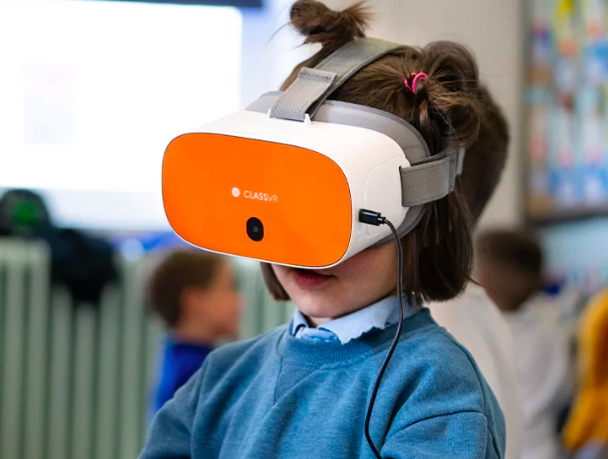Up until about Thanksgiving last year, another acronym that began with the letter “A” was most popular in education circles. Like AI, it has mixed reviews on its practical effectiveness but still carries excitement in its potential.
Augmented and Virtual Reality (AR/VR) was and is still at the forefront of edtech as evidenced by the show floor at ISTE last week. According to ResearchAndMarkets.com’s “Virtual Reality In Education Global Market Report 2023” report, space grew from $8.67 billion in 2022 to $11.95 billion in 2023 and is expected to grow to $46.14 billion in 2027. Major players like Google, Microsoft Corporation, Meta, Samsung and Lenovo continue to invest major resources into its development.
To help break down just where the technology is as it relates to being a true teaching tool in the classroom today I spoke with ClassVR’s Chris Klein. The company was launched at the Bett Show in London in January 2017 and has since been installed in more than 40,000 classrooms worldwide. Have a listen.

On where education sits within the metaverse:
The concept has been around for a long time, with the key factor being real-time shared experiences using avatars. The metaverse is also a sort of wild, wild west. And it’s going to get consumerized. It’s going to get monetized. There’s going to be a lot of stuff that schools are very, very afraid of when bringing that in. The EdUverse is a small component of that same functionality, but with all the security and safety features that you need for education. You need to make sure that it supports things such as any hardware, any time, and any location. Teachers also have to find pedagogically relevant, engaging content that will work on all of their hardware across any network.
On integrating AR/VR into everyday instruction:
I don’t care whether it’s VR, I don’t care whether it’s interactive flat panels or whatever technology they are showing. The first thing educators have to say is, “Okay, I don’t want to change a lot. How does what you have mesh with what I do?” As opposed to, “What do I have to learn to be able to come into your space?” You should hold vendors accountable for that. We need to recognize these teachers know these students better than we do. A good teacher can teach with a wet paper bag and a stick if that’s all they have. I think that we need to be supporting them and providing something that is the next iteration or a better type of stick.
On the limits of AR/VR:
I see Rosa Parks sitting on the bus in the civil rights scene in the EduVerse. Why can’t I walk up and talk to her? I think that there’s a very slippery slope because I don’t want to be the person to actually say, this is what Rosa Parks sounds like. I don’t want to be the person to vet what Rosa Parks would say. I’d rather leave that piece out of what we offer and leave the teacher to be able to drive the instruction, him or herself within the classroom, as opposed to me as a technology person saying, “Well this is what it would be.”





